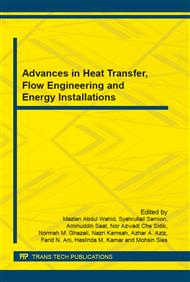p.236
p.241
p.245
p.250
p.259
p.265
p.272
p.277
p.282
A Review on Butanol and Ethanol Fuels in Internal Combustion Engines
Abstract:
A controversial argument about alternative fuels is taking lots of researchers and scientists attention and so far ethanol and butanol, regardless their blending percentage, are the most promising alcohols due to their potential properties and low production cost. Many studies have been conducted to justify the optimum fuel to be implemented. In this work, a review will be conducted on both butanol and ethanol in internal combustion engine as well as their contribution in combustion engine regarding combustion performance, pollutant emission, ignition timing and knocking. According to the previous literature, an attractive advantage for alcohol-gasoline blends is that they don’t require engine modification design and still reduce the pollutant emission effectively. The properties of these fuels seem to prove not only that we can run our engines with a reduction of pollutant gases but with the emission of greenhouse gasses. This work will provide a review on ethanol and butanol as an alternative fuels and their properties and behaviour in the engine will be described individually.
Info:
Periodical:
Pages:
259-264
Citation:
Online since:
January 2016
Price:
Сopyright:
© 2016 Trans Tech Publications Ltd. All Rights Reserved
Share:
Citation:


